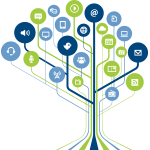fundraising
Optimize Your Results With Channel Optimization

What is Channel Optimization?
This approach increases overall efficiency of your available communication channels through data-driven decisions. Knowing what communication vehicles motivate a donor to give as well as knowing what giving mechanism a donor prefers can result in better fundraising.
- Channel optimization can help you communicate with donors through their preference, not yours, and thus maximize your message being heard.
- Optimization does not mean eliminating a channel, nor does it mean reducing quantity. Don’t necessarily cut down on how much you send…just strive to always do it smarter.
- Applicable to cultivation, stewardship, and solicitation within the donor cycle. As we’ve discussed in previous blog posts, the cultivation and stewardship activities for a fundraising program are just as important as solicitations with today’s donors.
What Can Channel Optimization Accomplish For Your Program?
1) Cuts down on “noise” for your donors and prospects. By communicating using the donor’s preference, your message has a better chance of being seen and heard. Communications sent by less preferential channels could be viewed by the donor as both noise and waste.
2) Enhances your internal budget efficiency. Maybe you’re direct mailing donors who do not respond to that channel. Maybe you are using email or the phone channels in an inefficient manner. Channel optimization can eliminate waste and enable you to shift precious budget resources into solicitations for other segments of your database or for enhancing the cultivation and stewardship of your more recent donors.
3) Enhance results. For recent donors, channel optimization can strengthen your renewal percentages and average gifts. For acquisition and reacquisition, channel optimization can enable you to put more focus on specific segments (such as young alumni) and increase giving in targeted areas.
Three Steps to Help You Get Started in Channel Optimization
1) Survey your donors and prospects. Directly ask about their communication preferences, including channels and timing. Ask not only what they’d like to receive but how and when.
2) Conduct an analysis of your gift data to use in tandem with your donor survey feedback. Determine if your donor “preferences” match with how they are currently giving. Look for trends in areas such as geography, graduation years, ask amounts, degrees and majors, and overall efficiency.
Note: RuffaloCODY currently has a Direct Mail Reporting Tool to conduct this kind of analysis for solicitations in your direct mail channel.
3) Develop your communications plan to integrate your new findings. You’ve invested time and resources in surveys and analytics. Now focus on realizing the ROI of that effort. Prioritize what you integrate based on what your program can reasonably handle. It’s better to add five things and do them all extremely well than to add 10 things and be average at each.
By optimizing your channel usage through data-driven decisions, you can make the best use of your available staff and budget resources in order to not only achieve your program’s goals for the current year. You can also develop other pillars of your overall program to better enable future growth.